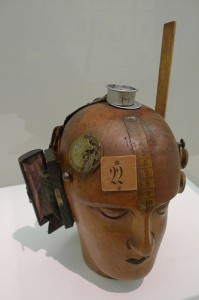Undergraduate Introduction to Semantics
Humans build and understand sentences they have never heard before. They talk about mere possibilities. They describe situations that could never exist in reality. How do they do it? What makes them so smart? Humans use symbols, but they do not just use symbols to pick out things in the world. They have symbols that can interact with each other to produce complex descriptions of real or merely possible people, things, events, and situations. The most powerful symbols of human languages are “function symbols”, little words like not, if, and, or, every, and some, or pieces of inflection, like plural or tense morphology. Function symbols are the glue that allows humans to create complex meanings from strings of words that they perceive as arranged into hierarchical tree structures. Function symbols occupy distinguished positions (“head positions”) in those structures, from where they control the process of meaning composition. Function symbols are the kind of symbols scholars of human languages are most interested in. They are the key players in connecting language with creative thought.
In addition to a tight mechanism for meaning composition, humans use particles and intonation to mark given, new, or contrastive information, and to indicate what they are wondering about, what they put up for discussion, and what they take to be established facts. They also use perfectly synchronized gestures to accompany their speech. Most mysteriously, humans seem to systematically exploit each other’s mind reading capabilities to convey much more than what they literally say.
This course introduces you to the craft of doing semantics. Semantics is a thriving subdiscipline of linguistics with close ties to philosophy of language, logic, and cognitive psychology. This class is for you if you are interested in linguistic meaning, have an analytic mind, enjoy theory building, and are curious about how highly abstract theories connect with everyday situations. The class comes with a lab that functions as a scientific initiation component. You will acquire hands-on experience with semantic fieldwork and mini-experiments.

